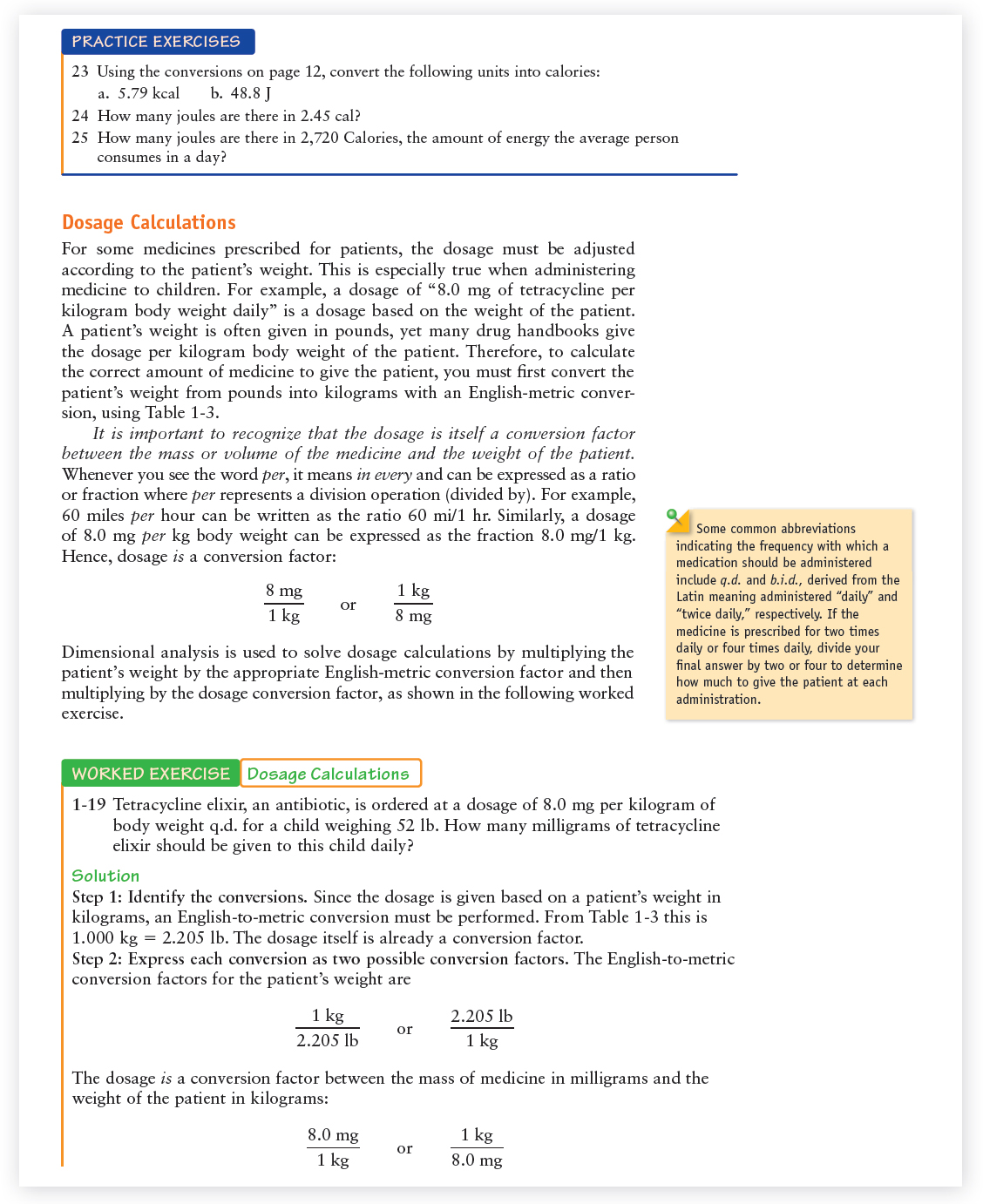Science Texts
Your approach to your science textbook will depend somewhat on whether you are studying a math-based science, such as physics, or a text-based science, such as biology. In either case, you need to become familiar with the overall format of the book. Review the table of contents and the glossary (a list of key words and their definitions), and check the material in the appendixes (supplemental materials at the end of the book). There you will find lists of physical constants, unit conversions, and various charts and tables. Many physics and chemistry books also include a mini-review of the math you will need in those science courses. (See Figure 6.5.)
Notice the organization of each chapter, and pay special attention to graphs, charts, and boxes. The amount of technical detail might seem overwhelming. Remember that textbook authors take great care to present material in a logical format, and they include tools to guide you through the material. Chapter-opening learning objectives and end-of-chapter summaries can be useful to study both before and after reading the chapter. You will usually find answers to selected problems in the back of the book. Use the answer key or the student solutions manual to make sure that you’re solving problems and answering questions accurately.

FIGURE 6.5  Reading Science Textbooks
Reading Science Textbooks
This page from an allied-health-themed chemistry textbook includes abbreviations you’d need to know for dosages, practice exercises, and a formula for calculating medicine dosages. If you need help with any of your textbooks, ask your instructor or classmates. Source: Excerpt from page 23 of Essentials of General, Organic, and Biochemistry, 2nd ed., by Denise Guinn. Copyright © 2012 by W. H. Freeman. Used by permission.
Source: Excerpt from page 23 of Essentials of General, Organic, and Biochemistry, 2nd ed., by Denise Guinn. Copyright © 2012 by W. H. Freeman. Used by permission.
As you begin an assigned section in a science text, skim the material quickly to gain a general idea of the topic and to familiarize yourself with any new vocabulary and technical symbols. Then look over the end-of-chapter problems so that you’ll know what to look for in your detailed reading of the chapter. State a specific goal: “I’m going to learn about recent developments in plate tectonics,” or “I’m going to distinguish between mitosis and meiosis,” or “Tonight I’m going to focus on the topics in this chapter that were stressed in class.”
Should you underline and highlight, or should you outline the material in your science textbooks? You might decide to underline or highlight for a subject such as anatomy, which involves a lot of memorization. In most sciences, however, it is best to outline the text chapters.